
TouchChat HD for iPad® / iPod® / iPhone® ($149.99 USD + tax) is a full-featured communication solution for individuals who have difficulty using their natural voice. TouchChat is designed for individuals with Autism, Down Syndrome, ALS, apraxia, stroke, or other conditions that affect a person’s ability to use natural speech. Please note that the WordPower suite of vocabularies is not included in this version of TouchChat.
TouchChat provides English, Spanish and French options in one app, and is a universal app supporting iPhone®, iPod®, and iPad®.
TouchChat fits into the category of assistive technology known as Augmentative and Alternative Communication (AAC) and includes features that were previously only available in much more expensive dedicated devices. Words, phrases and messages are spoken with a built-in voice synthesizer or by playing a recorded message. Various English, Spanish and French synthesized voices are available, allowing the user to choose a voice that fits their own personality. Most voices are standard and other can be purchased through the upgrade store within the app.
TouchChat can be used for individuals with a wide variety of access needs. Included in the app is: Integrated head tracking (*with applicable iPad/iPhone models), configurable switch scanning, and a range of touch access features.
TouchChat gives an individual the ability to navigate through page sets and speak messages. Page sets are linked pages, each of which is divided into a number of buttons. The buttons are programmed to have specific actions, such as speaking a message, navigating to a different page, changing the volume or clearing the display. Various page sets are included with TouchChat:
English Standard Page Sets
Designed by Gail Van Tatenhove, PA, MS, CCC-SLP, for adults and adolescents with developmental disabilities. Vocabulary in VocabPC is arranged as carrier phrases, interactive sentences, activity vocabulary and naming words. VocabPC uses a 12 location page layout. .
MultiChat 15 is now offered in a Student, Adolescent and Adult version. There are multiple forms of communication available in this program: sentences, phrases, individual words, recordings for story-telling and visual scenes. Also included are interactive play and reading pages, and social pages. There are symbols on every button with the exception of several core words. .

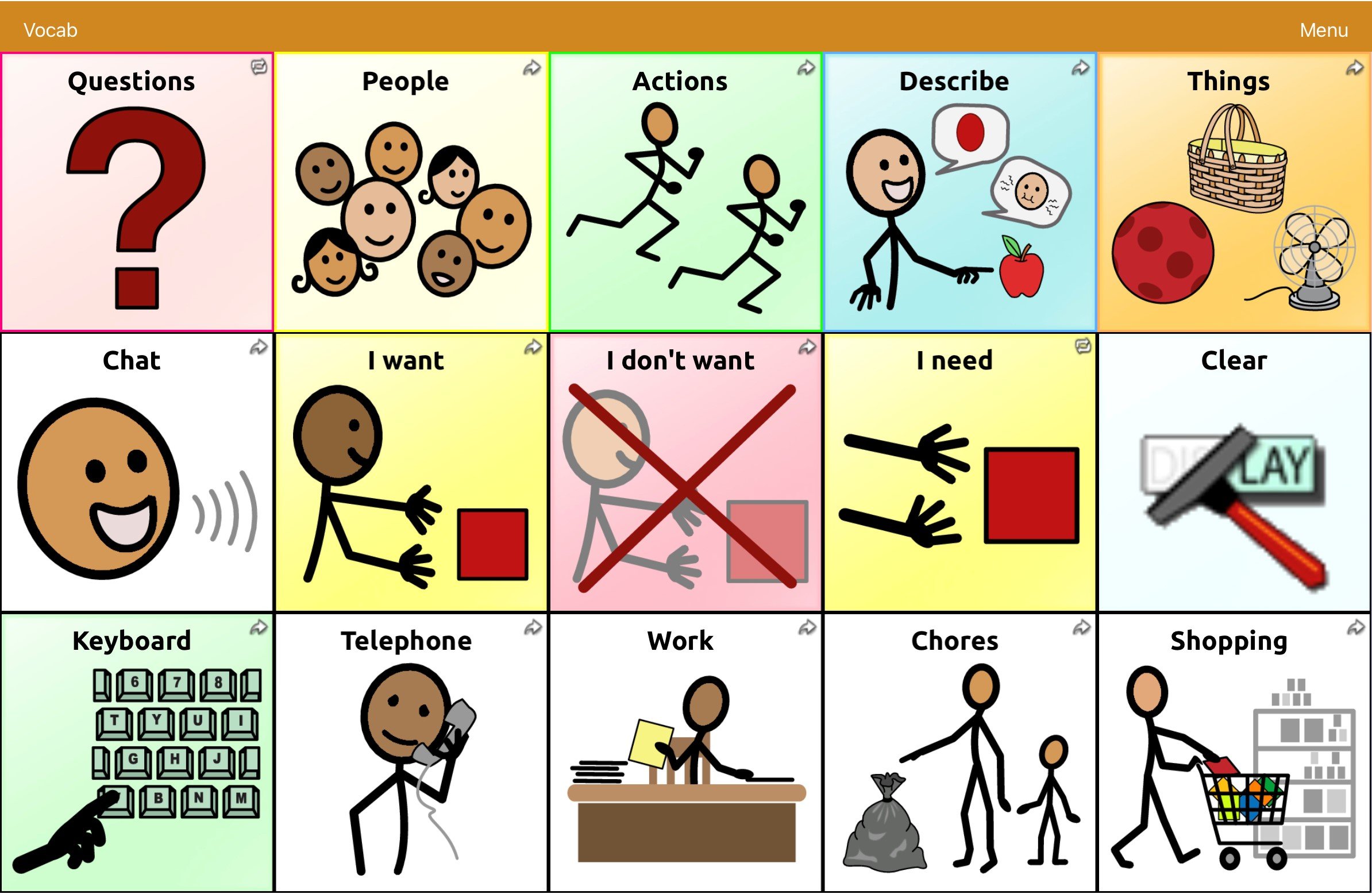
Spelling is a QWERTY keyboard page set with four word prediction buttons and a few pre-stored phrases.
My QuickChat is an introductory communication system geared toward individuals with complex communication needs. It offers a high frequency, phrase-based communication system in an easy-to-use, yet very engaging format. The progressive system offers a variety of topics for everyday needs and conversation and provides immediate and more successful communication exchanges within a variety of settings. myQuickChat is available for children in 4, 8 and 12 locations and adults in 8 and 12 locations, each with an identical 16 location Support Master Home Page.
My Core is a combination of core and phrase based vocabulary geared toward individuals with literacy skills.
4 Basic is a vocabulary option with 4 buttons per page for those needing minimal targets. .

“Communication Journey: Aphasia” is a vocabulary file containing features and vocabulary designed to support people with aphasia. It was developed by Lois Turner (SLP), Anne MacCallum (SLP) and Sarah Gauthier (SLP Assistant) in consultation with a group of speech-language pathologists who work exclusively with people with aphasia and brain injuries. All the participants work at CAYA (Communication Assistance for Youth and Adults) and the GF Strong Rehabilitation Centre in Vancouver, BC, Canada. The framework of the file was derived from the Life Participation Approach to Aphasia from the Aphasia Institute in Toronto, Canada. The pages were created to facilitate participation in daily activities and to promote social links.
Aphasia, a disorder caused by damage to the parts of the brain where language is stored, may affect the ability to comprehend language, to express oneself, to read, or to spell and write. “Communication Journey: Aphasia” can easily be adapted for use by people with different types of aphasia and a range of cognitive levels and degrees of severity.
Symbols, photographs, visual scenes, videos or words can be used on the message, topic and script pages. Included are pages that facilitate supported communication techniques, self-advocacy, directing care, and repair of communication breakdowns. Information typically included in communication books; including pain and emotion scales, maps, templates for personal information and life stories, and schedules are also incorporated into the vocabulary file. Specialized features include variable “rate of speech” and “pause between words”.Grid size and vocabulary are easily customized to reflect and support the life experiences of the person with aphasia.
Although this vocabulary file contains starting-point vocabulary commonly required by adults with aphasia, it MUST be customized. Each person has a unique history and the file must reflect their lives, experiences and abilities.
Download the “Communication Journey: Aphasia File" User Guide.
Download the Saltillo Client Information Form
Download the CAYA Resource Document
Spanish Standard Page Sets
This Spanish version is very similar to the English MultiChat 15 Student file. However, due to the differences in the two languages some changes have been made to accurately represent each language. For example, Spanish nouns have a gender (masculine or feminine) whereas English nouns do not. In addition, Spanish has a number of different ways to use articles such as “the” that are not consistent with English. The MulitChat 15 Spanish file is developed to be universal so that it is appropriate for many Spanish speakers. Therefore, definitely take advantage of the editing capability to make regional specifications.
This vocabulary file is exactly the same as the MultiChat 15 Spanish file except that the label on the button has both the English and Spanish word. Please note, when TouchChat speaks the word and/or phrases, it is only spoken in Spanish.
This vocabulary file consists of categories of words with a symbol on each button. This file is intended for children without the ability to construct sentences yet.
This vocabulary file is intended for children that are beginning to create simple sentences. Each page contains 20 buttons of words with a picture. Words are organized into categories with some core words for creating beginning sentences.
This is a Spanish keyboard.
This is a direct translation of the English version. VocabPC was designed by Gail Van Tatenhove, PA, MS, CCC-SLP, for adults and adolescents with developmental disabilities. Vocabulary in VocabPC is arranged as carrier phrases, interactive sentences, activity vocabulary and naming words. VocabPC uses a 12 location page layout.

This is a Spanish vocabulary file containing features and vocabulary designed to support people with aphasia. Developed originally in English and translated to Spanish. It was developed by Lois Turner (SLP), Anne MacCallum (SLP) and Sarah Gauthier (SLP Assistant) in consultation with a group of speech-language pathologists who work exclusively with people with aphasia and brain injuries. All the participants work at CAYA (Communication Assistance for Youth and Adults) and the GF Strong Rehabilitation Centre in Vancouver, BC, Canada. The framework of the file was derived from the Life Participation Approach to Aphasia from the Aphasia Institute in Toronto, Canada. The pages were created to facilitate participation in daily activities and to promote social links.
Aphasia, a disorder caused by damage to the parts of the brain where language is stored, may affect the ability to comprehend language, to express oneself, to read, or to spell and write. “Communication Journey: Afasia” can easily be adapted for use by people with different types of aphasia and a range of cognitive levels and degrees of severity.
Symbols, photographs, visual scenes, videos or words can be used on the message, topic and script pages. Included are pages that facilitate supported communication techniques, self-advocacy, directing care, and repair of communication breakdowns. Information typically included in communication books; including pain and emotion scales, maps, templates for personal information and life stories, and schedules are also incorporated into the vocabulary file. Specialized features include variable “rate of speech” and “pause between words”.Grid size and vocabulary are easily customized to reflect and support the life experiences of the person with aphasia.
Although this vocabulary file contains starting-point vocabulary commonly required by adults with aphasia, it MUST be customized. Each person has a unique history and the file must reflect their lives, experiences and abilities.
Download the "Communication Journey: Afasia File" User Guide.
Canadian French Standard Page Sets
MultiChat 15 French is a direct translation of the MultiChat 15 Student version with some grammar exceptions. There are multiple forms of communication available in this program; sentences, phrases, individual words, recordings for story-telling and visual scenes. Also included are interactive play and reading pages, social pages and a News-2-You starter page for the weekly newspaper's vocabulary. There are symbols on every button with the exclusion of several core words.
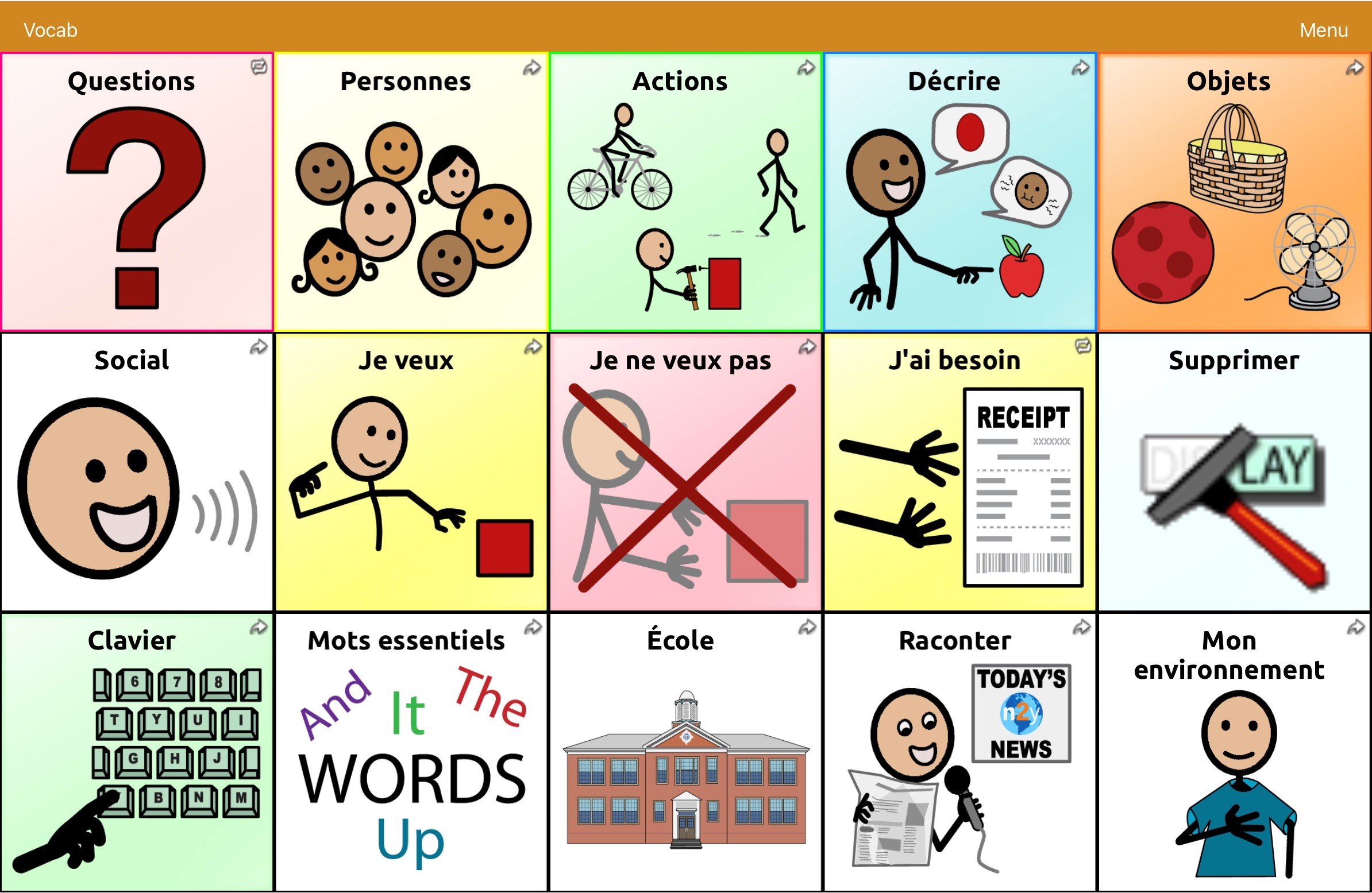
Épeler is similar to the English Spelling vocabulary file. It is a QWERTY keyboard page set with four word prediction buttons and a few pre-stored phrases.

4 de base is a French translation of the 4 Basic vocabulary file. It is a vocabulary option with 4 buttons per page for those needing minimal targets.

Communication Journey: Aphasie is a French translation of the English Communication Journey: Aphasia. It is a vocabulary file containing features and vocabulary designed to support people with aphasia. It was developed by Lois Turner (SLP), Anne MacCallum (SLP) and Sarah Gauthier (SLP Assistant) in consultation with a group of speech-language pathologists who work exclusively with people with aphasia and brain injuries. All the participants work at CAYA (Communication Assistance for Youth and Adults) and the GF Strong Rehabilitation Centre in Vancouver, BC, Canada. The framework of the file was derived from the Life Participation Approach to Aphasia from the Aphasia Institute in Toronto, Canada. The pages were created to facilitate participation in daily activities and to promote social links.
Aphasia, a disorder caused by damage to the parts of the brain where language is stored, may affect the ability to comprehend language, to express oneself, to read, or to spell and write. “Communication Journey: Aphasia” can easily be adapted for use by people with different types of aphasia and a range of cognitive levels and degrees of severity.
Symbols, photographs, visual scenes, videos or words can be used on the message, topic and script pages. Included are pages that facilitate supported communication techniques, self-advocacy, directing care, and repair of communication breakdowns. Information typically included in communication books; including pain and emotion scales, maps, templates for personal information and life stories, and schedules are also incorporated into the vocabulary file. Specialized features include variable “rate of speech” and “pause between words”.Grid size and vocabulary are easily customized to reflect and support the life experiences of the person with aphasia.
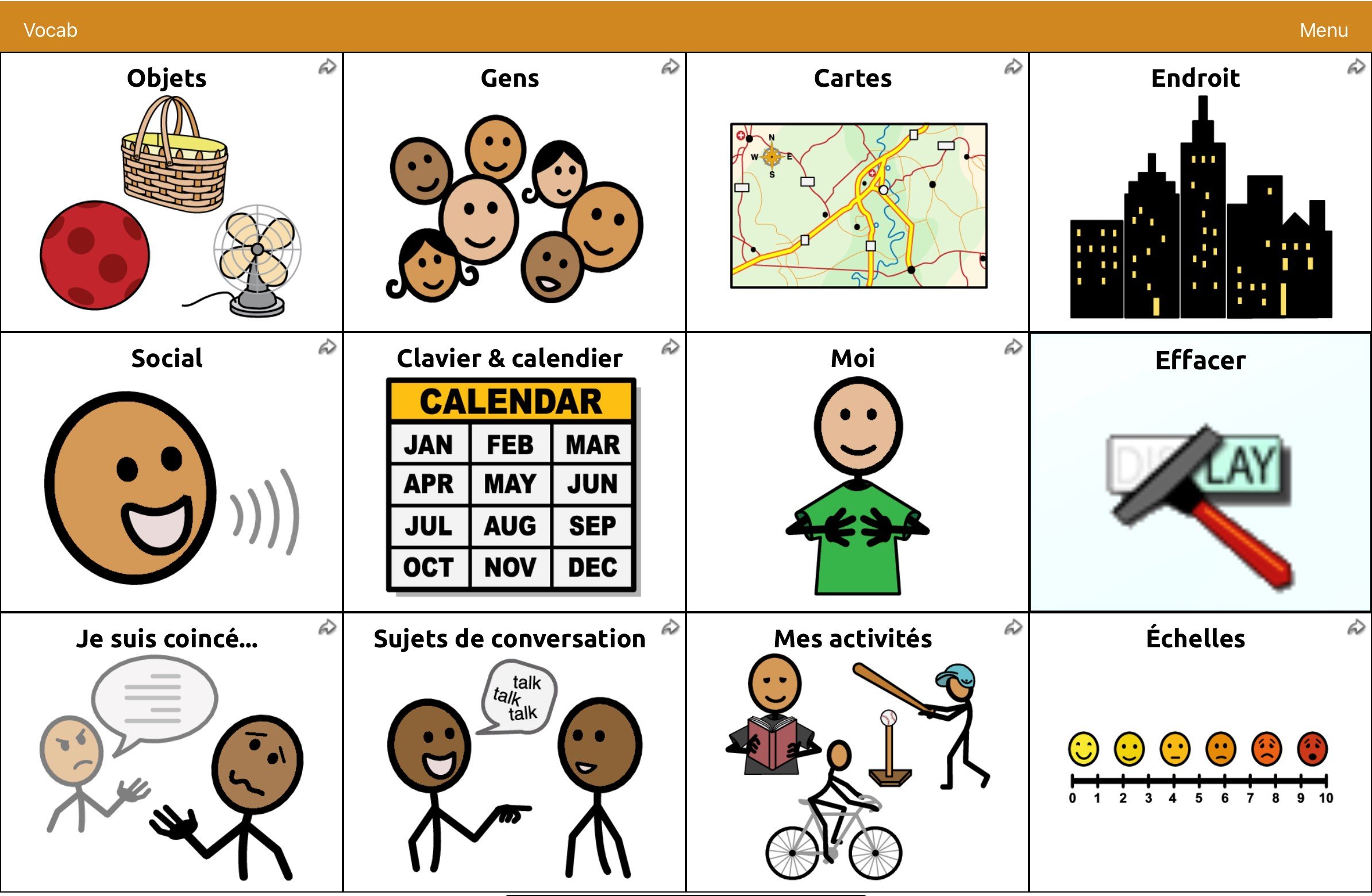
VocabPC français is a French translation of the Vocab PC vocabulary file. It was designed by Gail Van Tatenhove, PA, MS, CCC-SLP, for adults and adolescents with developmental disabilities. Vocabulary in VocabPC is arranged as carrier phrases, interactive sentences, activity vocabulary and naming words. VocabPC uses a 12 location page layout.
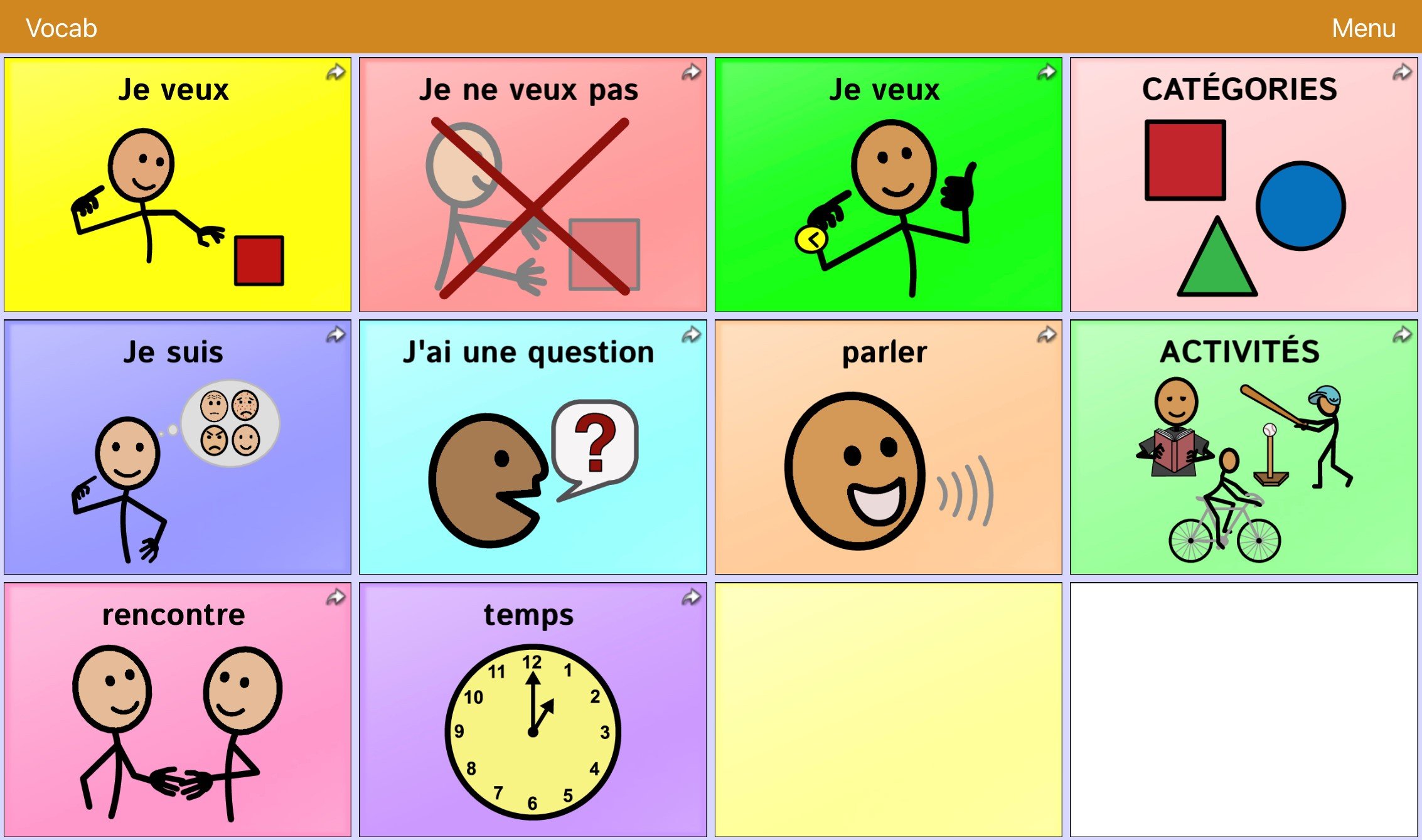
Each page set targets individuals with different communication needs. Additional page sets, including WordPower™, Gateway©, and Pixon™ are available as in-app purchases.
Text generated with TouchChat pages can be shared on social media or via iMessage® and email using a wireless connection. Generate a message, push on the text window and choose a service. Additionally, text can be copied to/from TouchChat and other applications so it can be spoken out loud..
The pages, grid layout, buttons, messages, and symbols are fully customizable. Buttons can be copied and pasted into a different location or rearranged by simply dragging them to the desired new location. The styling of a button (colors, borders, fonts) can also be copied and pasted into another button.
Provided page sets can be modified to create new custom page sets. Select from over 45 button actions and nearly 40,000 Symbolstix® symbols* when creating new buttons. You can also choose to use an existing image or take a photo with the built-in camera. Additionally, gestures can be used to navigate to new pages, speak messages, etc.
*Please note: PCS© symbols are only compatible with the TouchChat app if PCS is also purchased in TouchChat as an in-app purchase.
Button activation timing can be adjusted to meet the needs and capabilities of the user. Adjustments include button dwell time and button release time. Buttons can also be configured to activate on release.
Users can program buttons to play audio files such as music from the media library or videos from the camera roll or a YouTube™ link.
Once programming is complete, be sure to protect custom files. Vocabulary files can be imported and exported to a computer through iTunes® file sharing, DropBox™ or Google Drive™. TouchChat also enables users to subscribe to iShare and store custom files for safe keeping (not available to customers residing in the European Union).
Languages: TouchChat is also available in Hebrew and Arabic.











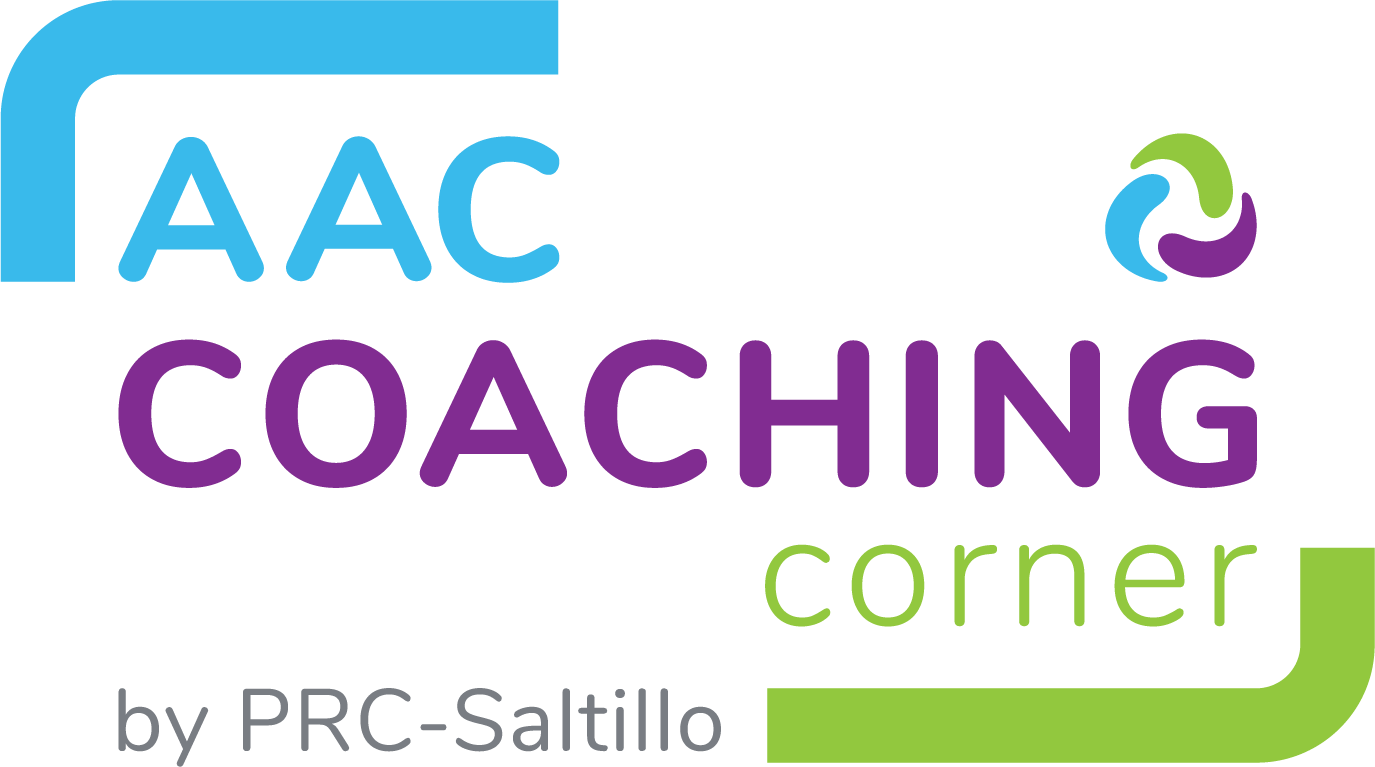



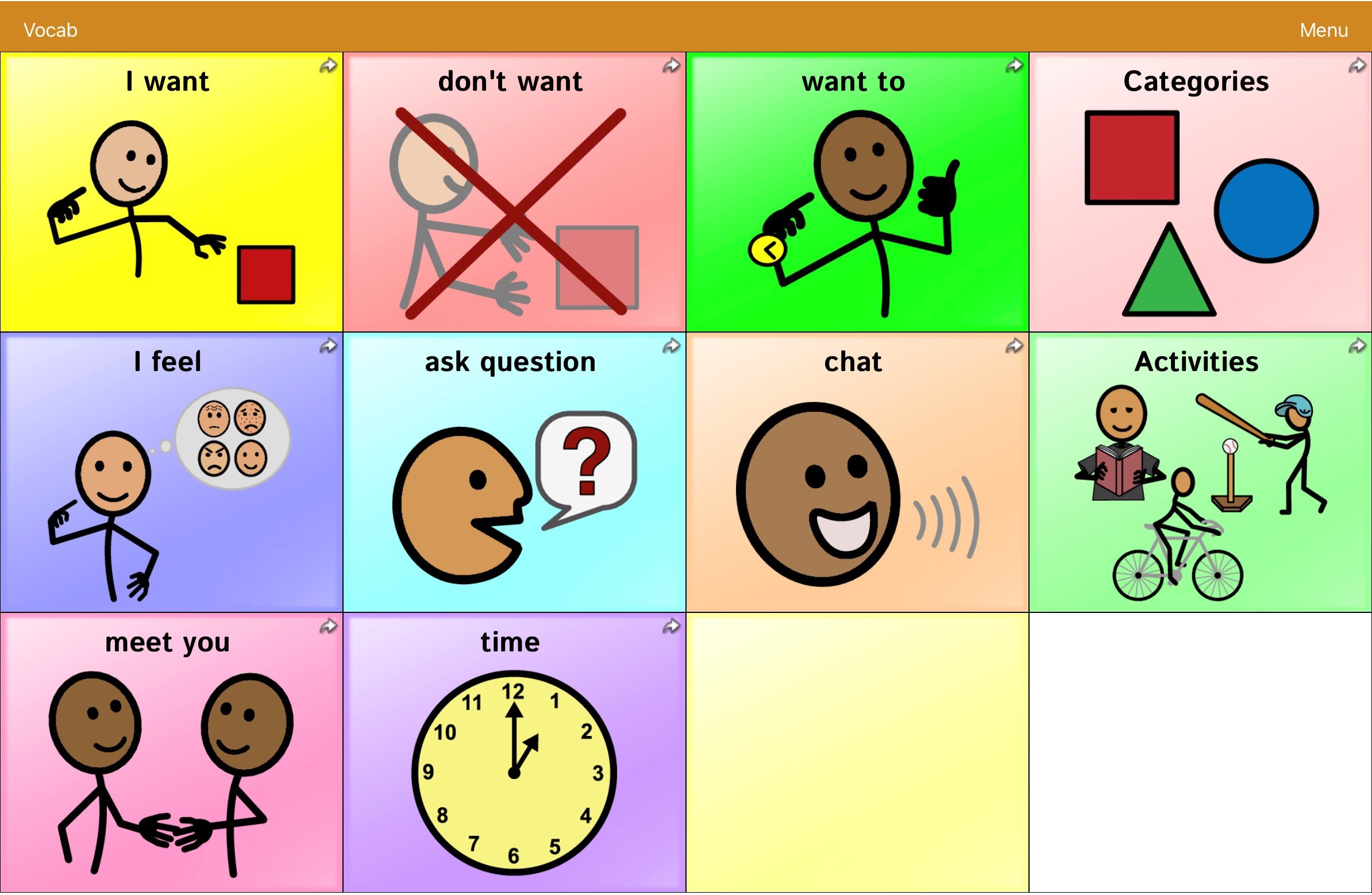
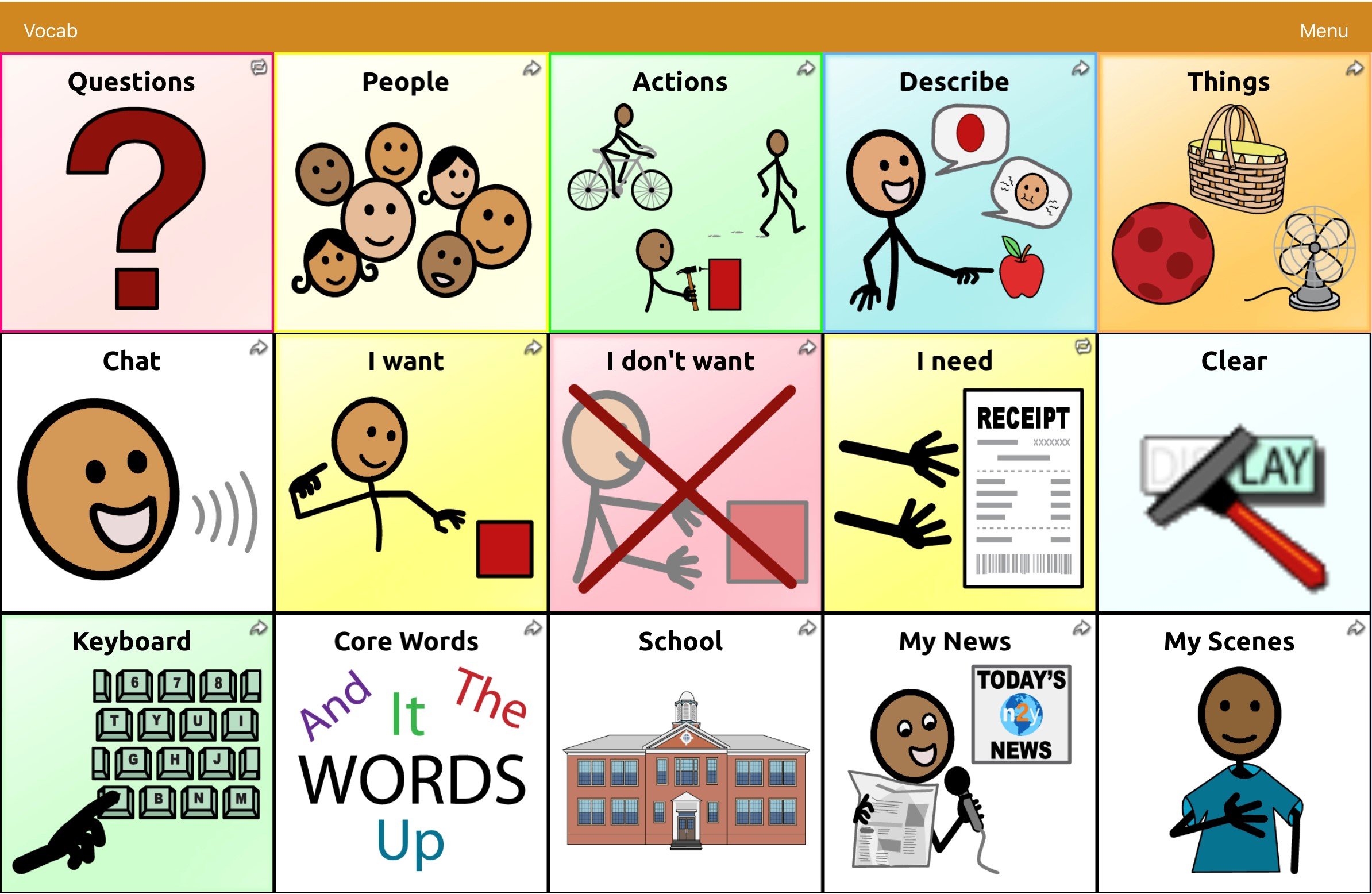



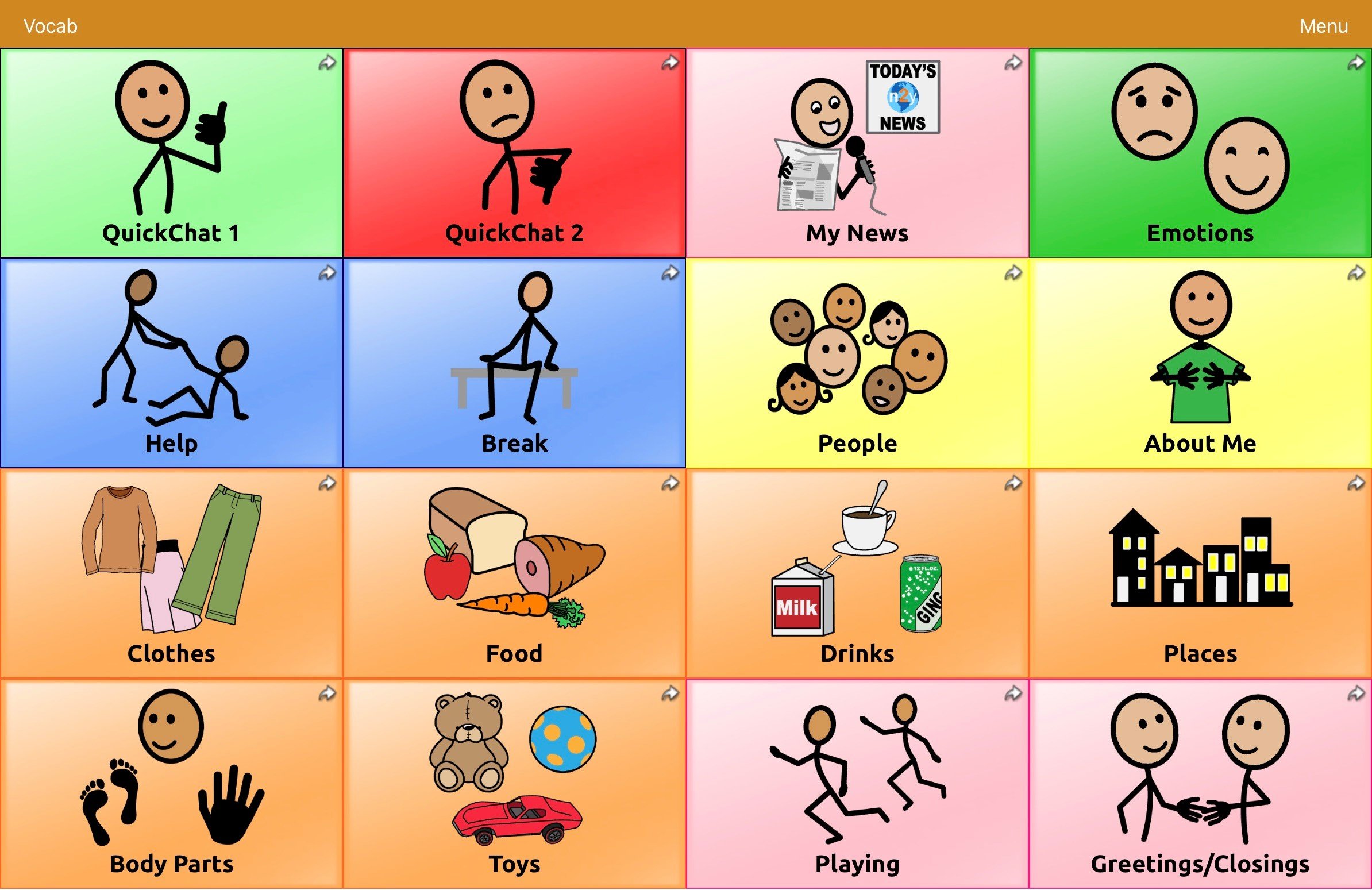

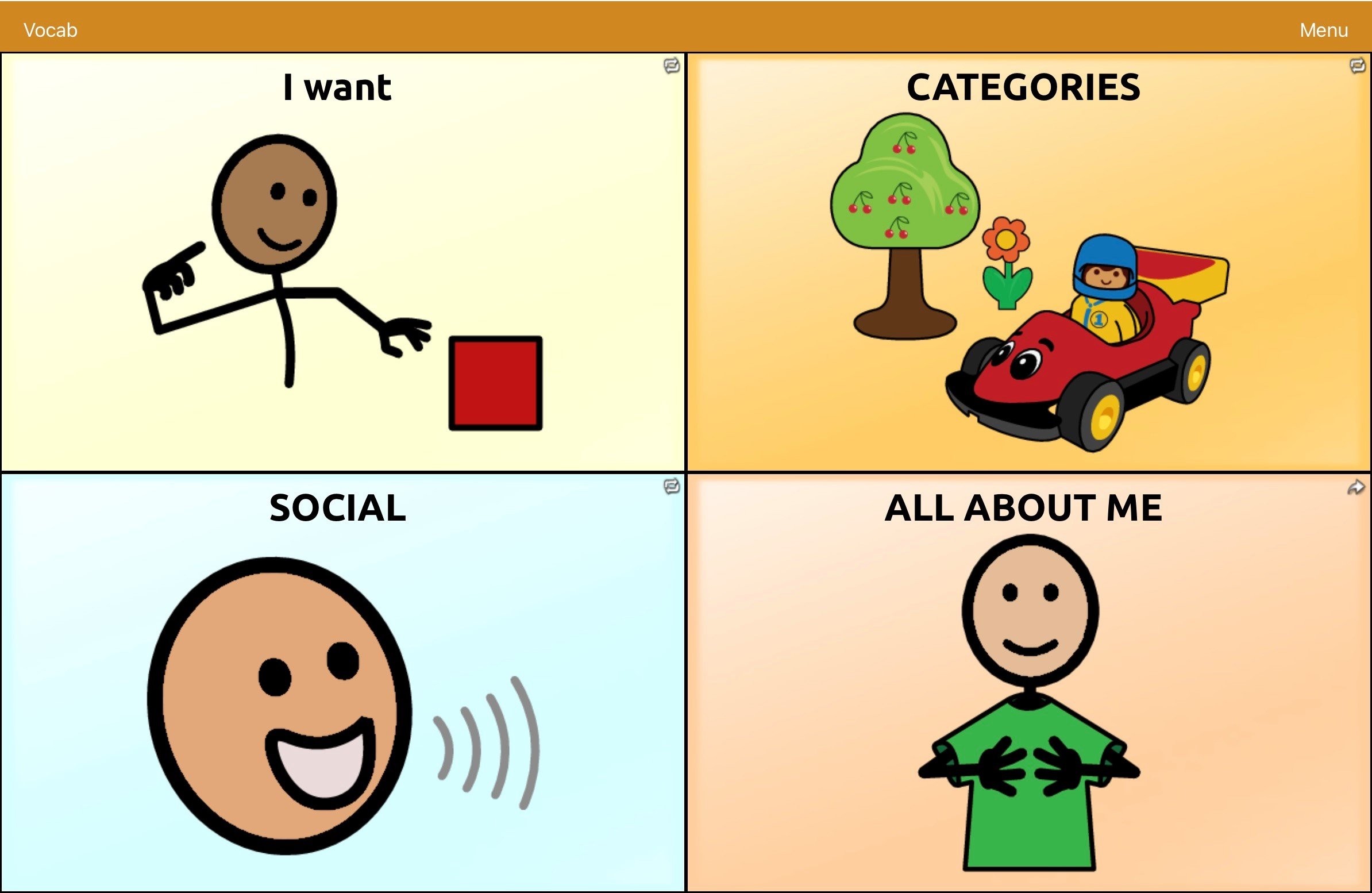

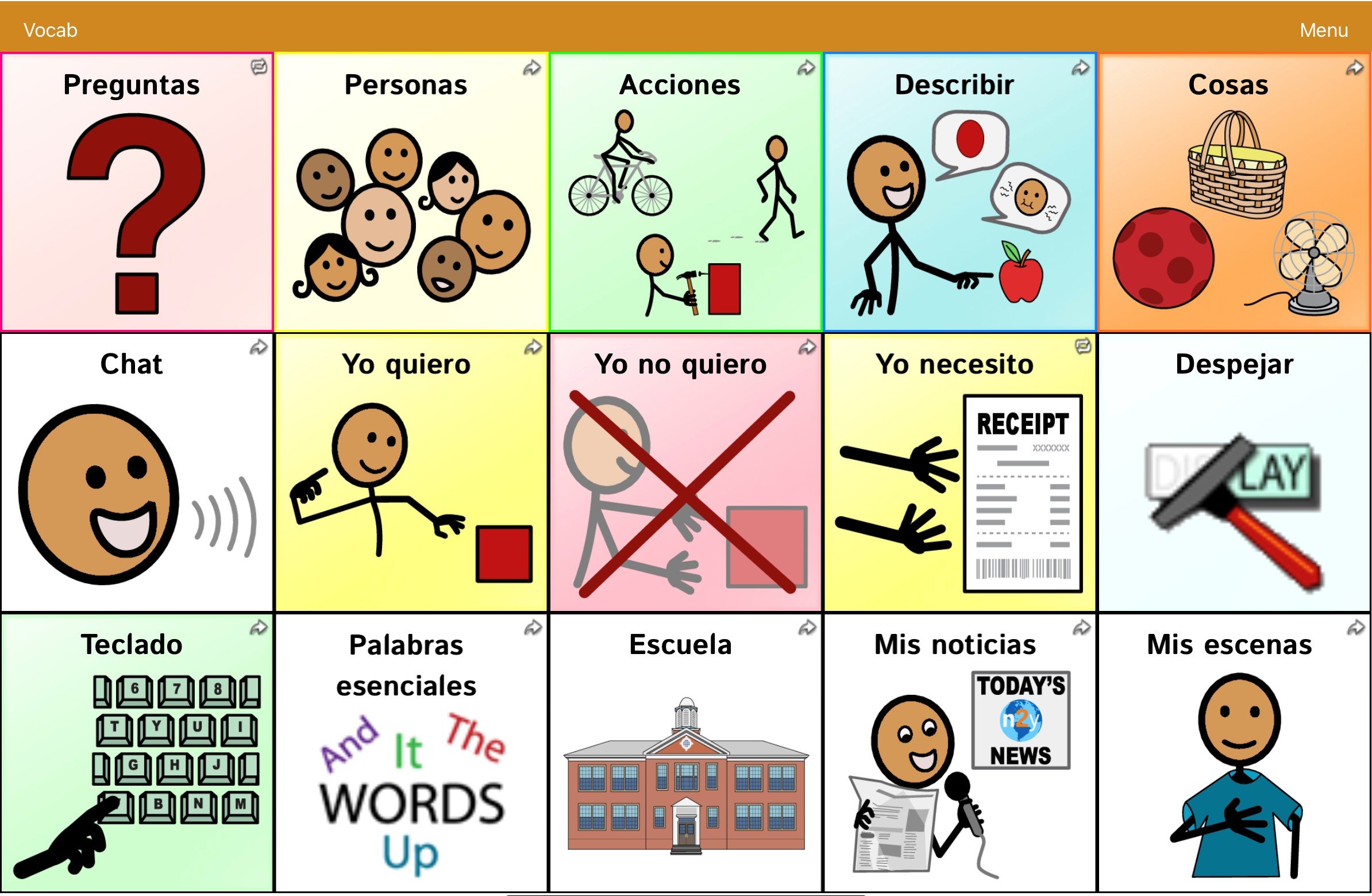
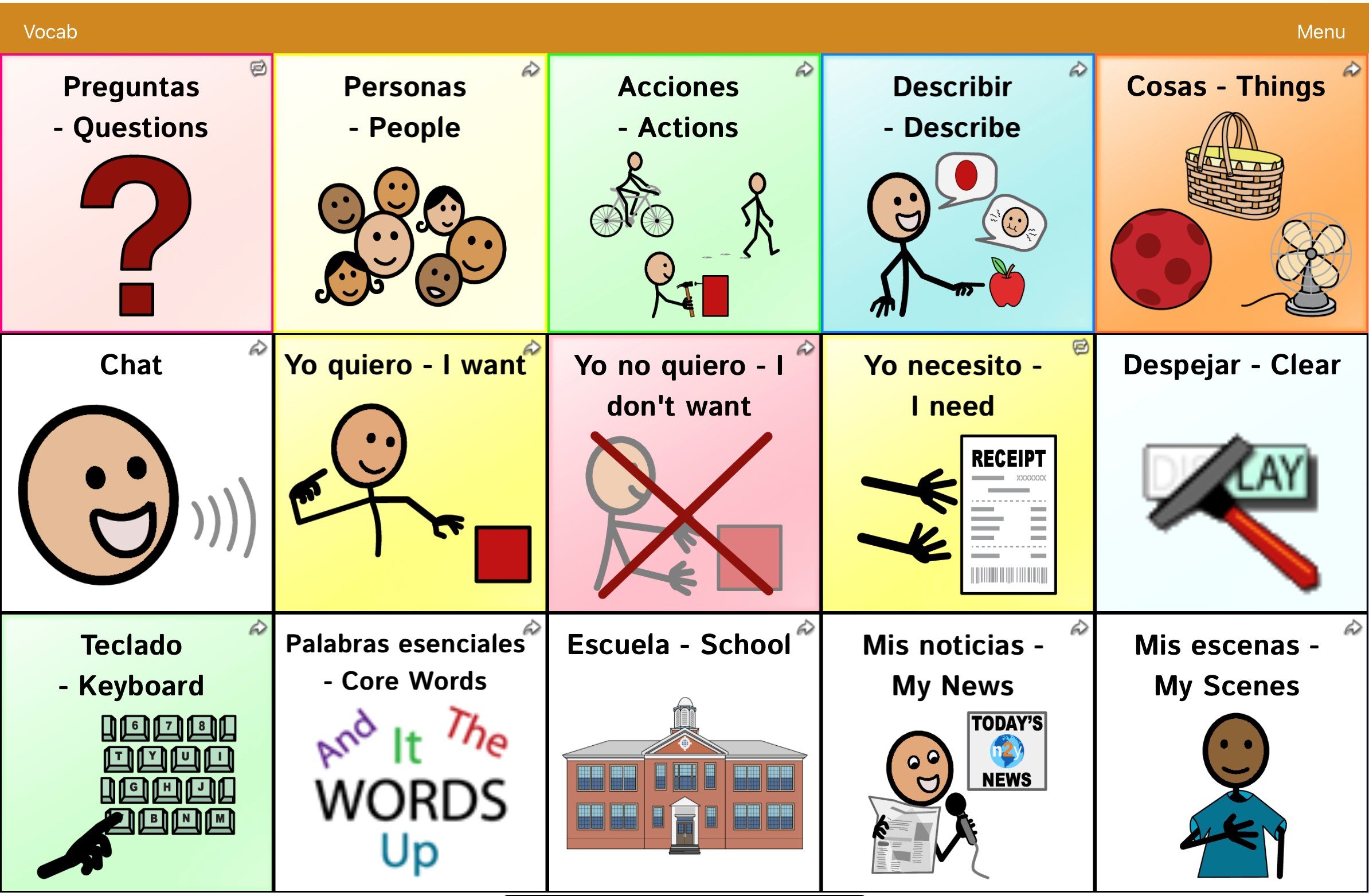
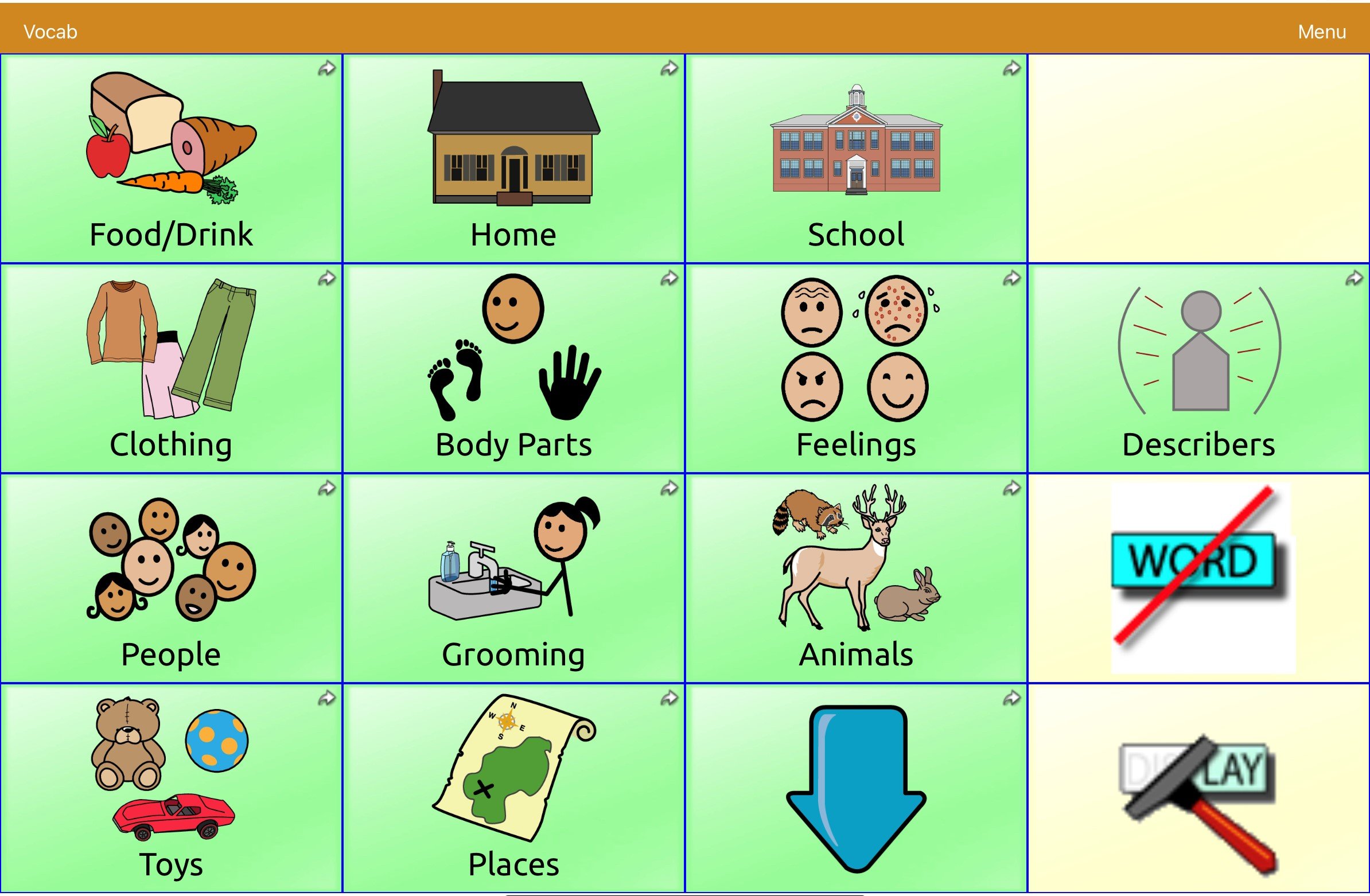
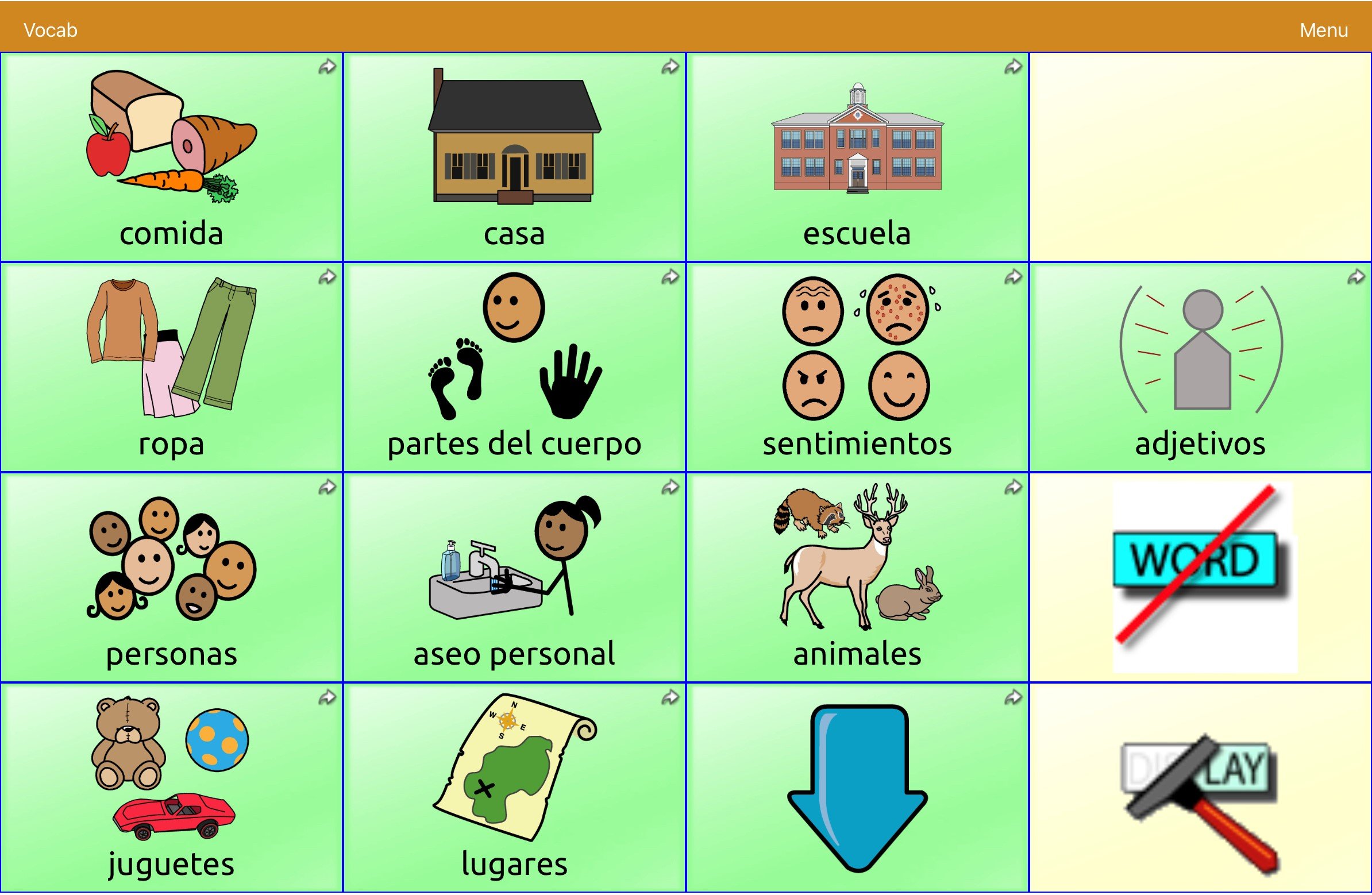
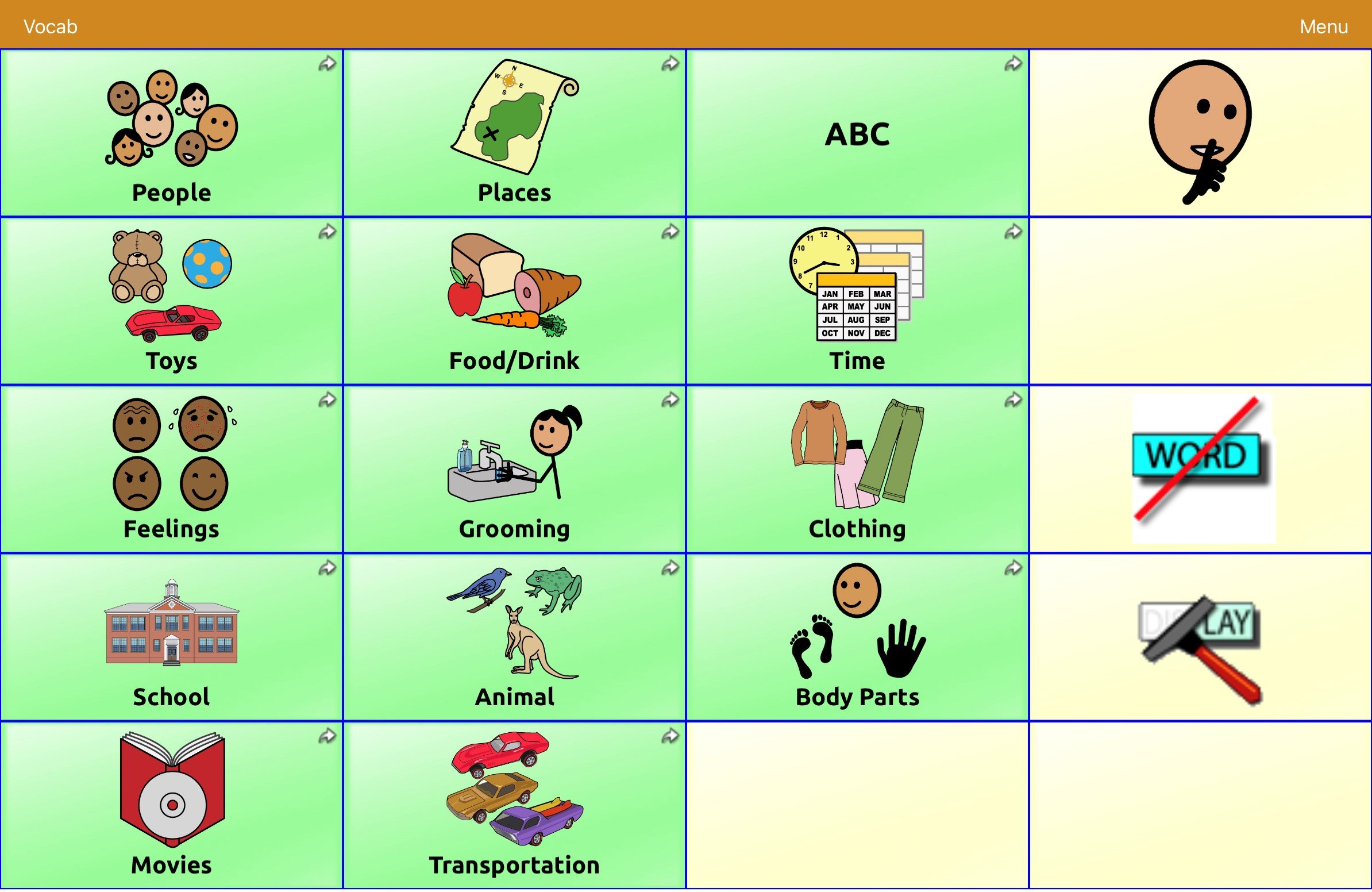
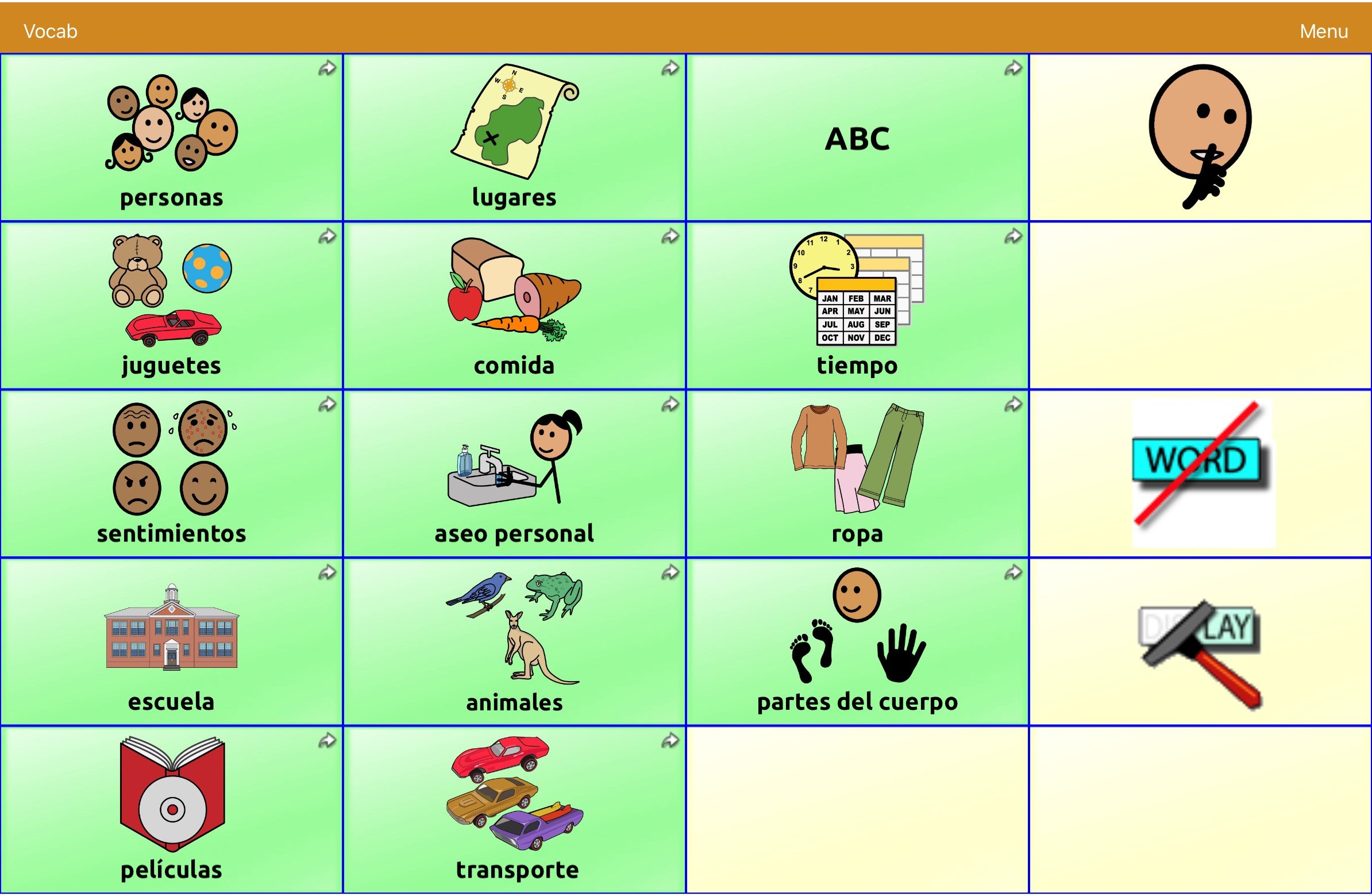

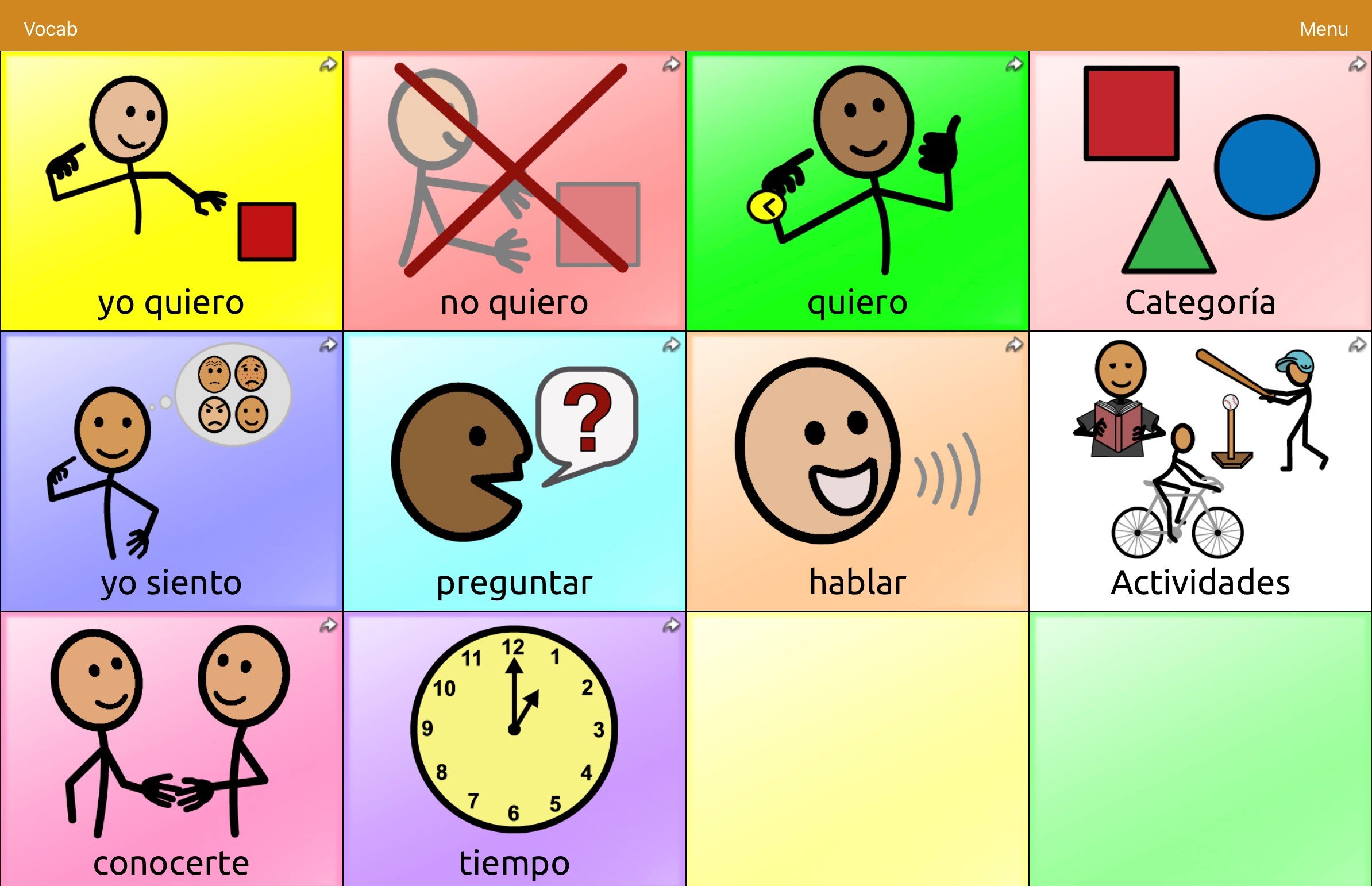






 When you can’t speak, life can feel overwhelming – but it doesn’t have to be that way. Experience the life-changing joy of meaningful communication through our world-renowned, customized AAC vocabularies, assistive technology, and our unmatched training and personalized support. Trust our 50+ years of AAC experience to guide you to the right communication solution. Connect with us to learn more.
When you can’t speak, life can feel overwhelming – but it doesn’t have to be that way. Experience the life-changing joy of meaningful communication through our world-renowned, customized AAC vocabularies, assistive technology, and our unmatched training and personalized support. Trust our 50+ years of AAC experience to guide you to the right communication solution. Connect with us to learn more.
 For over 50 years, PRC has been a leader in giving a voice to those who cannot speak for themselves. Since our founding in 1966, PRC has paved the way in the development of speech-generating devices (SGDs) and continues to innovate in the field of augmentative and alternative communication.
For over 50 years, PRC has been a leader in giving a voice to those who cannot speak for themselves. Since our founding in 1966, PRC has paved the way in the development of speech-generating devices (SGDs) and continues to innovate in the field of augmentative and alternative communication.
 Saltillo is dedicated to making personal communication possible to individuals who are unable to use their natural voice. We strive to offer comprehensive training and support for your Saltillo device.
Saltillo is dedicated to making personal communication possible to individuals who are unable to use their natural voice. We strive to offer comprehensive training and support for your Saltillo device.
 The AAC Funding website from PRC and Saltillo assists SLPs, caregivers and/or educators through the process of creating a submission packet, whether funding an AAC device through Medicare/Medicaid or private insurance.
The AAC Funding website from PRC and Saltillo assists SLPs, caregivers and/or educators through the process of creating a submission packet, whether funding an AAC device through Medicare/Medicaid or private insurance.
 Learn the basics about augmentative and alternative communication (AAC), explore the difference between language and communication, and read stories of real-life people who use AAC.
Learn the basics about augmentative and alternative communication (AAC), explore the difference between language and communication, and read stories of real-life people who use AAC.
 Teaching (and learning) a new access method for augmentative and alternative communication (AAC) can be overwhelming. ALP for AAC breaks down this learning process into 3 broad stages with 8 specific phases.
Teaching (and learning) a new access method for augmentative and alternative communication (AAC) can be overwhelming. ALP for AAC breaks down this learning process into 3 broad stages with 8 specific phases.
 The AAC Language Lab offers real-life solutions in support of language development. Explore language stages and interactive materials designed for Speech Language Pathologists (SLPs), Educators and Parents.
The AAC Language Lab offers real-life solutions in support of language development. Explore language stages and interactive materials designed for Speech Language Pathologists (SLPs), Educators and Parents.
 Realize Language is an online service that gives parents and professionals powerful ways to monitor, measure, and maximize a child's use of an Augmentative & Alternative Communication (AAC) speech device.
Realize Language is an online service that gives parents and professionals powerful ways to monitor, measure, and maximize a child's use of an Augmentative & Alternative Communication (AAC) speech device.
 The Center for AAC & Autism is dedicated to building awareness of the power of AAC, changing the lives of children with autism and other developmental disabilities through education, resources, information and supporting clinical research.
The Center for AAC & Autism is dedicated to building awareness of the power of AAC, changing the lives of children with autism and other developmental disabilities through education, resources, information and supporting clinical research.
 LAMP Words for Life is designed to meet the communication needs of children with autism. Based on the Language Acquisition through Motor Planning (LAMP) methodology, its consistent motor plan enables early success and allows the client's vocabulary and communication skills to grow.
LAMP Words for Life is designed to meet the communication needs of children with autism. Based on the Language Acquisition through Motor Planning (LAMP) methodology, its consistent motor plan enables early success and allows the client's vocabulary and communication skills to grow.
 TouchChat is a full-featured communication solution for individuals who have difficulty using their natural voice. TouchChat is designed for individuals with Autism, Down Syndrome, ALS, apraxia, stroke, or other conditions that affect a person's ability to use natural speech.
TouchChat is a full-featured communication solution for individuals who have difficulty using their natural voice. TouchChat is designed for individuals with Autism, Down Syndrome, ALS, apraxia, stroke, or other conditions that affect a person's ability to use natural speech.
 PRC-Saltillo offers a wealth of resources to make online AAC as easy as possible for you, so you can continue to provide quality treatment and evaluations to clients. Enter AAC TeleTips below and find the online AAC support you need.
PRC-Saltillo offers a wealth of resources to make online AAC as easy as possible for you, so you can continue to provide quality treatment and evaluations to clients. Enter AAC TeleTips below and find the online AAC support you need.
 PRC-Saltillo
PRC-Saltillo PRC
PRC SALTILLO
SALTILLO AAC FUNDING
AAC FUNDING EXPLORE AAC
EXPLORE AAC ALP FOR AAC
ALP FOR AAC LANGUAGE LAB
LANGUAGE LAB REALIZE LANGUAGE
REALIZE LANGUAGE AAC & AUTISM
AAC & AUTISM LAMP WORDS FOR LIFE
LAMP WORDS FOR LIFE TOUCH CHAT
TOUCH CHAT AAC Teletips
AAC Teletips

